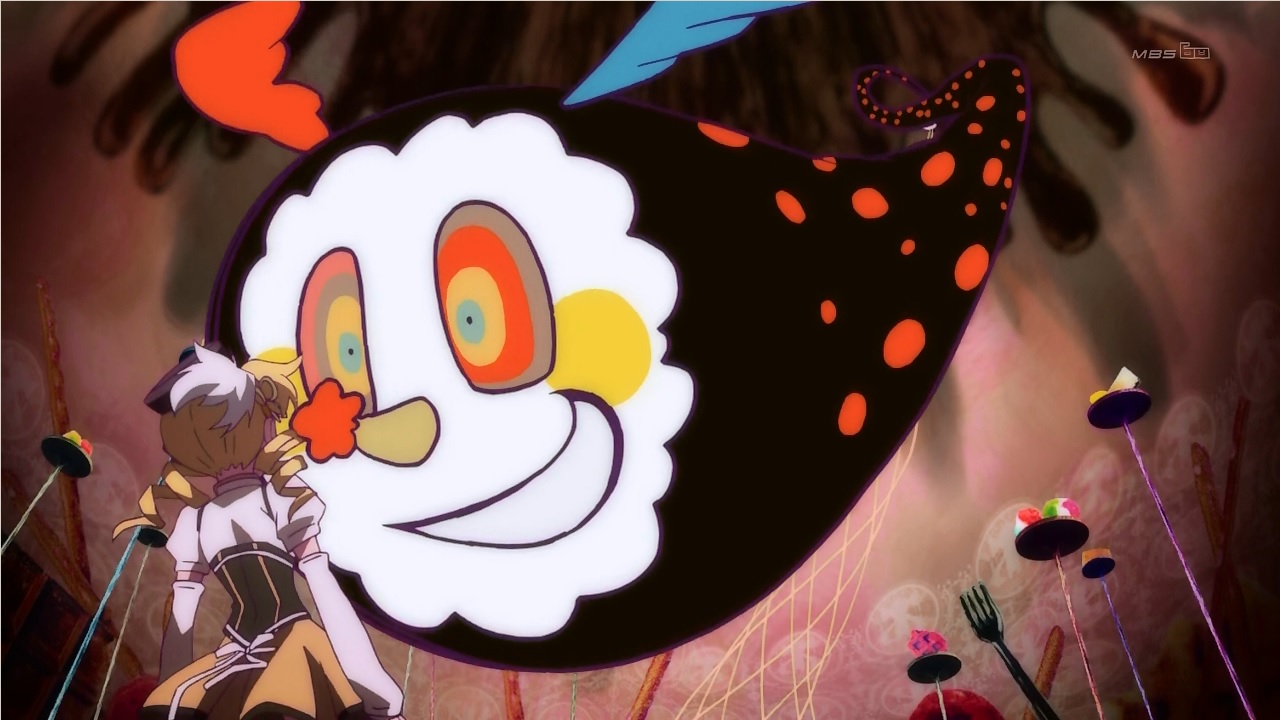2014 is the year Metafilter forced me to watch Aldnoah.Zero. But apart from that it was a pretty good year.
That Witch Craft Works was an …interesting show you can perhaps tell from its ending theme, where cute little chibi witches are singing while stuck in medieval torture devices. It seemws to start as yet another series where an ordinary teenage dirt bag accidently enters the magical backstages of the world to get involved into some sort of secret war and get himself a battle harem. But instead, he’s the hapless princess that needs to be rescued by the most popular girl in the school, who turns out to be a witch. As does his little sister. And the various transfer students that turn up all of a sudden. All of it is done so deadpan that for the longest time I wasn’t sure whether this was all mean to be taken serious or whether the characters really were as dumb as they seemed to be. An urban fantasy series for those who like the Dortmunder crime novels.
Thanks to that Metafilter group watch I got interested into watching anime properly again. Aldnoah.Zero then was the first series I actually watched seasonally, as the episodes came out. Not knowing anything about Crunchyroll or streaming or whatever, I watched it the old fashioned way: torrents. And then only for the first three-four episodes? Because of going to the London SF Worldcon I stopped watching for a while and never picked it up again. I ended up finishing it much much later and getting disappointed like everybody else.
Trinity Seven is not a good series,let me make that clear, but it was one of the first modern anime series I finished when I really started watching anime again in late 2014/2015. Unlike Witch Craft Works this series took its battle harem setting completely serious, with our protagonist being just an ordinary teenager until it turns out he has vast magical powers and must learn to use them to harness the Trinity Seven, the seven most powerful mages at his new magical school. All girls of course. It was a fun series, mostly because it was the first time I’d watched a series like this and all those cliches looked fresh to me.
the Japan Animator Expo on the other hand was very good, a series of stand alone shorts created to showcase the art and range of Japanese animation. If you look closer, you can see the inspirations for several later series pop up here already. It used to be all available on its own website, but as of now you need to scour Youtube to find the individual episodes.
This aside, for me 2014 was more a year of good fun series than a year in which anything really extraordinary came out. Space Dandy was fine but not the saviour of anime that it was proclaimed to be at the time. (And how often has it been mentioned since?) Instead, when I think of 2014 I think of shows like Noragami about a down on his luck, penniless god and the high school girl bound to him. Or Hitsugi no Chaika, about the daughter of the defeated demonic overlord, who is going round the world attempting to find the pieces of his corpse so she can give him a proper burial. Or Ore Twintail ni Narimasu, where a boy with a twintail fetish is transformed in a magical girl by an alien scientist to fight alien invaders with other, lesser fetishes.
On the sports front, Baby Steps was mostly only servicably (ha!) animated tennis show, but with a compelling story that saw me finish the first season in less than a week. Noticable for having our new to sport protagonist being inspired by a female tennis player and the series never weakened her to big him up. Haikyuu!! was the next big thing for those people who like cute boys playing cool sports. Ping Pong on the other hand wasn;t cute at all, but one of the best anime series ever nonetheless. More cute boys were on call in the second season of Free.
Idol wise, we got the launch of Pripara. Every girl in the world, at one point in their lives, will receive a pri ticket, which will give her access to the magical world of PriPara. Where, if they want to, they can become idols. What sets the series apart is its acceptance of all kinds of girls being idols, even girls who some people may think are actually boys. An incredibly positive and affirming series, with a message for our own world. At 140 episodes it is a bit of an investment to watch, but I found it incredibly entertaining. The sort of series I’d never thought I’d watch.
Statistically: 173 series on my to watch list, of which 98 have already been watched.
This is day six of Twelve Days of Anime 2019. Tomorrow: 2015: when all hope was lost and I started watching anime seasonally.
